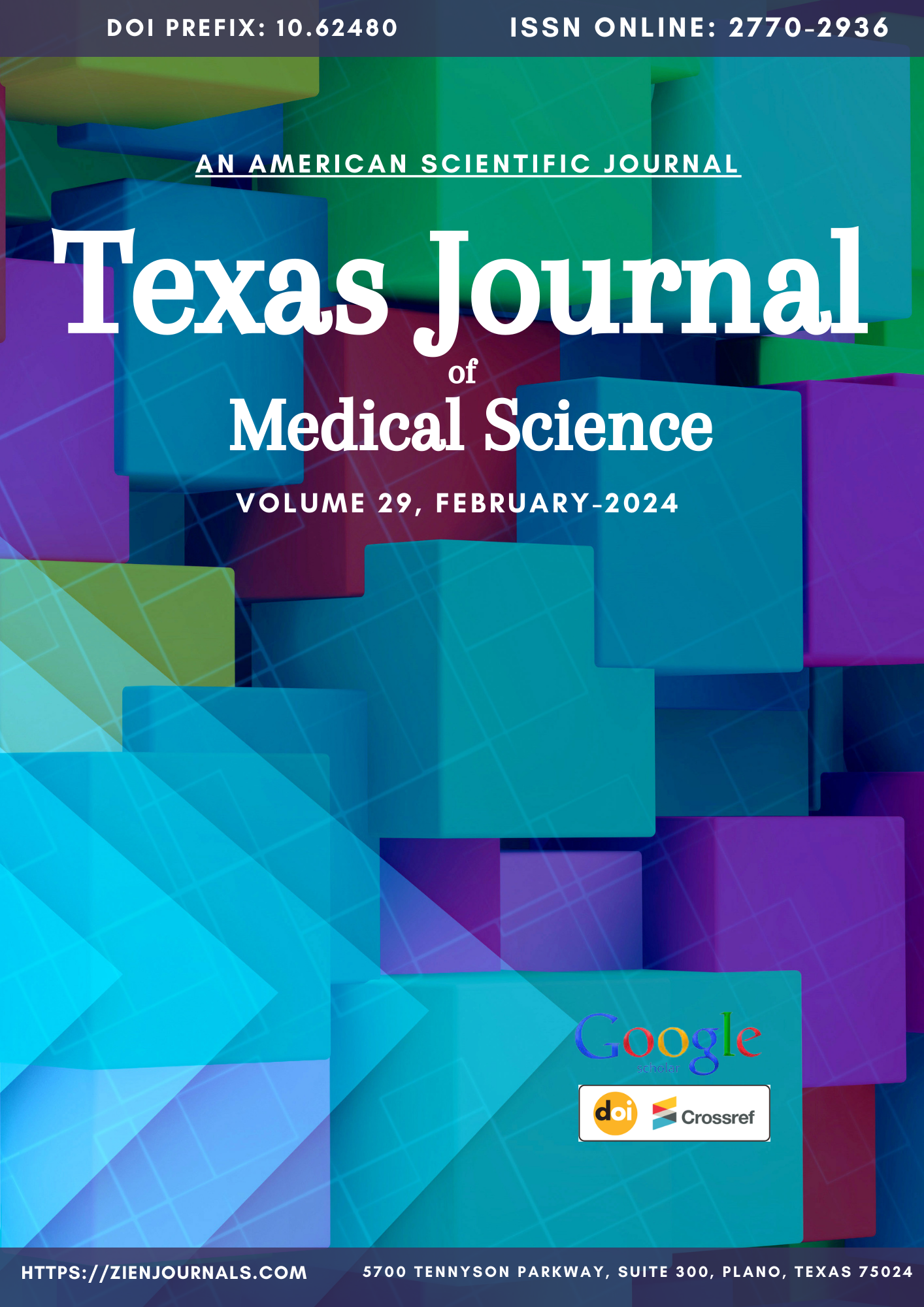"The significance of the GNRH 1 gene polymorphism (rs 6185, rs1812594) in the development of idiopathic hypogonadotropic hypogonadism."
DOI:
https://doi.org/10.62480/tjms.2024.vol29.pp8-15Keywords:
idiopathic, hypogonadism, significanceAbstract
The purpose of the study is to study the significance of the GNRH 1 gene polymorphism (rs 6185, rs1812594) in the development of idiopathic hypogonadotropic hypogonadism in boys and girls.
References
Gore AC. GnRH: The Master Molecule of Reproduction. //Boston: Kluwer Academic Publishers; 2002
Crowe S, Cushing H, Homans J. Experimental hypophysectomy. //Bull Johns Hopkins Hospital. 1910; 21:127–167
Harris GW. The induction of ovulation in the rabbit by electrical stimulation of the hypothalamo-hypophysial mechanism. //Proc R Soc Lond B Biol Sci. 1937; 122:374–394
Hinsey JC. The relation of the nervous system to ovulation and other phenomena of the female reproductive tract. //Cold Spring Harbor Symp Quant Biol. 1937; 5:269–279.
Brooks CM. A study of the mechanism whereby coitus excites the ovulation-producing activity of the rabbit's pituitary. //Am J Physiol. 1938; 121:157–177.
Taubenhaus M, Soskin S. Release of luteinizing hormone from the anterior hypophysis by an acetylcholine-like substance from the hypothalamic region. Endocrinology. 1941; 29:958–968.
Schally AV, et al. Isolation and properties of the FSH and LH-releasing hormone. //Biochem Biophys Res Comm. 1971; 43:393–399]
Amoss M, et al. Purification, amino acid composition and N-terminus of the hypothalamic luteinizing hormone releasing factor (LRF) of ovine origin. //Biochem Biophys Res Commun. 1971; 44:205–210
Gajdos ZK, Hirschhorn JN, Palmert MR. What controls the timing of puberty? An update on progress from genetic investigation. //Curr Opin Endocrinol Diabetes Obes. 2009; 16:16–24.
Kim H-G, Bhagavath B, Layman LC. Clinical manifestations of impaired GnRH neuron development and function. //Neurosignals. 2008; 16:165–182
Franco B, et al. A gene deleted in Kallmann's syndrome shares homology with neural cell adhesion and axonal path-finding molecules. Nature. 1991; 353:529–536
Legouis R, et al. The candidate gene for the X-linked Kallmann syndrome encodes a protein related to adhesion molecules. //Cell. 1991; 67:423–435.
Dodé C, et al. Loss-of-function mutations in FGFR1 cause autosomal dominant Kallmann syndrome. //Nat Genet. 2003; 33:463–465.
Falardeau J, et al. Decreased FGF8 signaling causes deficiency of gonadotropin-releasing hormone in humans and mice. //J Clin Invest. 2008; 118:2822–2831
Dodé C, et al. Kallmann syndrome: Mutations in the genes encoding prokineticin-2 and prokineticin receptor-2. //PLoS Genet. 2006; 2:e175
Kim HG, et al. Mutations in CHD7, encoding a chromatin-remodeling protein, cause idiopathic hypogonadotropic hypogonadism and Kallmann syndrome. //Am J Hum Genet. 2008; 83:511–519.
Jackson RS, et al. Obesity and impaired prohormone processing associated with mutations in the human prohormone convertase 1 gene. Nat Genet. 1997; 16:303–306.
de Roux N, et al. Hypogonadotropic hypogonadism due to loss of function of the KiSS-1-derived peptide receptor GPR54. //Proc Natl Acad Sci USA. 2003; 100:10972–10976.
Seminara SB, et al. The GPR54 gene as a regulator of puberty. //N Engl J Med. 2003; 349:1614–1627.
de Roux N, et al. A family with hypogonadotropic hypogonadism and mutations in the gonadotropin-releasing hormone receptor. //N Engl J Med. 1997; 337:1597–1602.
Topaloglu AK, et al. TAC3 and TACR3 mutations in familial hypogonadotropic hypogonadism reveal a key role for Neurokinin B in the central control of reproduction. //Nat Genet. 2008; 41:354–358
Cattanach BM, Iddon CA, Charlton HM, Chiappa SA, Fink G. Gonadotropin-releasing hormone deficiency in a mutant mouse with hypogonadism. //Nature. 1977; 269:338–340.
Mason AJ, et al. A deletion truncating the gonadotropin-releasing hormone gene is responsible for hypogonadism in the hpg mouse. Science. 1986; 234:1366–1371
Mason AJ, et al. The hypogonadal mouse: Reproductive functions restored by gene therapy. //Science. 1986; 234:1372–1378
Tiong J, Locastro T, Wray S. Gonadotropin-releasing hormone-1 (GnRH-1) is involved in tooth maturation and biomineralization. //Dev Dyn. 2007; 236:2980–2992
Chan YM, de Guillebon A, Lang-Muritano M, Plummer L, Cerrato F, Tsiaras S, Gaspert A, Lavoie HB, Wu CH, Crowley WF Jr, Amory JK, Pitteloud N, Seminara SB. GNRH1 mutations in patients with idiopathic hypogonadotropic hypogonadism. //Proc Natl Acad Sci U S A. 2009 Jul 14; 106(28):11703-8. doi: 10.1073/pnas.0903449106.
Downloads
Published
Issue
Section
License

This work is licensed under a Creative Commons Attribution-NonCommercial 4.0 International License.
User Rights
Under the Creative Commons Attribution-NonCommercial 4.0 International (CC-BY-NC), the author (s) and users are free to share (copy, distribute and transmit the contribution).
Rights of Authors
Authors retain the following rights:
1. Copyright and other proprietary rights relating to the article, such as patent rights,
2. the right to use the substance of the article in future works, including lectures and books,
3. the right to reproduce the article for own purposes, provided the copies are not offered for sale,
4. the right to self-archive the article.














